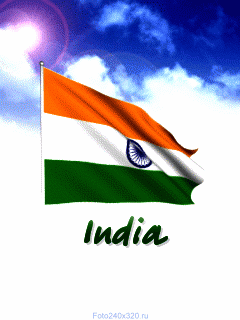National Flag of India - pride of our Nation
The symbol of a free nation is the national flag
of that country. Every free country in the world
has its own national flag. Our country, India,
too has its own national flag. It is referred to
as 'Tiranga', meaning tricolour. Indian
National Flag is a horizontally designed
tricolour with stripes of deep saffron, white
and green and a navy blue Ashok Chakra with 24
equally spaced spokes in the middle.
History of the National flag
The current national flag was adopted during a
meeting of the Constituent Assembly that took
place on 22 July 1947, just a few days before
India's independence on 15 August, 1947. It
served as the National Flag of the Dominion of
India from 15 August 1947 to 26 January 1950 and
that of the Republic of India thereafter. The
flag is based on the concept of 'Swaraj' and was
designed by Pingali Venkayya. At that time the
saffron and green stripes were used to honour
the two major religions of India, Hinduism and
Islam. Later a white band was added in the
centre with a spinning wheel in the middle to
show respect to each other's religions.
About the present national flag of India
Each of the colours and the blue Ashok Chakra in
the Indian National Flag has its own
significance and meaning. The top saffron colour
signifies the renunciation and devotion. The
white colour in the centre represents peace and
harmony. The green colour at the bottom
symbolises youth and energy. The Ashoka Chakra
or the Wheel of Ashoka denotes the
courageousness and peace.
The designing specifications and manufacturing
processes are looked after by the Bureau of
Indian Standards. Our national flag is always
made from khadi cloth, which is a special
hand-spun cloth, first introduced by Mahatma
Gandhi.
Apart from other laws, the
Flag
Code of India 2002 has been introduced
to govern the display and use of the Indian
National Flag in a manner that will in no
way disrespect our national pride. Official
regulation says that the flag must always be
treated with "dignity, loyalty and respect". The
flag must never touch the ground or water. It
should never be used as tablecloths, draped in
front of a platform, plaque, cover a statue,
cornerstone etc.
According to the Indian National Law, damaged or
soiled flags are not to be cast aside or
disrespectfully destroyed. They are to be
destroyed as a whole in private, preferably by
burning or by any other method consistent with
the dignity of the flag.
On our national days we ride on the waves of
patriotism. Every corner, every crossroad, every
shop, and most cars sport the tricolor - the
symbol of our sovereignty.
© Arked Infotech 2015



